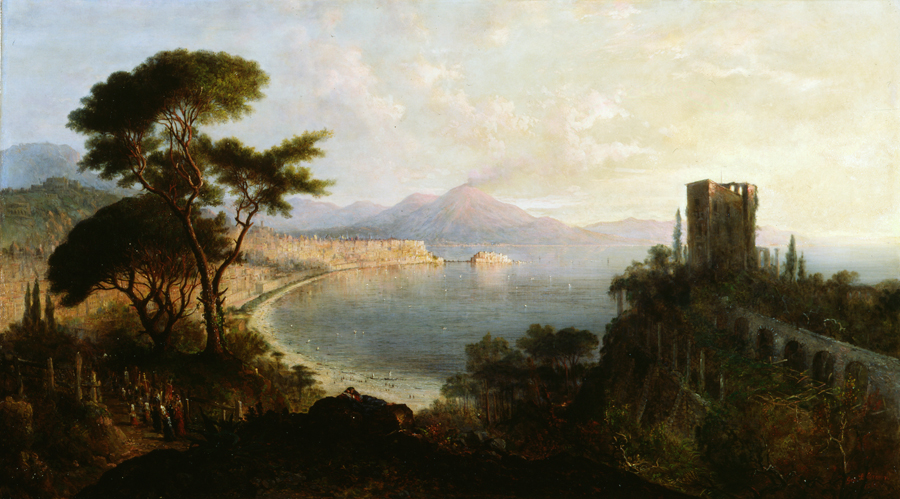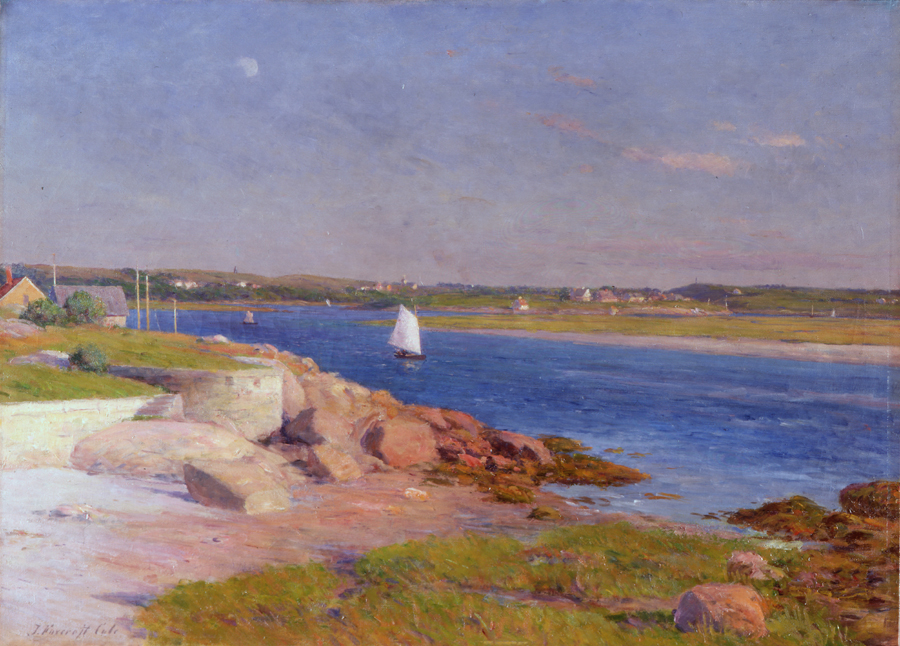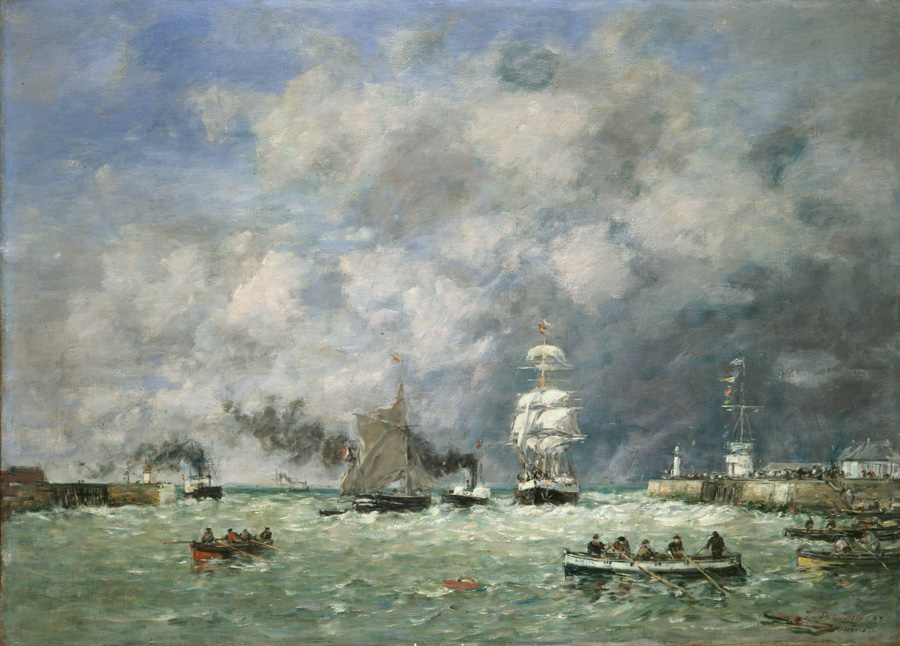Dates:
Location:
Boyd Gallery
European and American art in the nineteenth century was full of startling contrasts: grand vistas of ancient ruins versus small landscapes celebrating the specificity of local haunts; portraits of noblemen and women alongside depictions of peasants, farmers, and rogues.
Selected Works

"Sunset, View of Vesuvius and the Bay of Naples," 1864, oil on canvas by George Loring Brown, American, 1814-1889. Bequest of Joseph Edward Merrill, Class of 1854. 1909.1

"The Annisquam River, near Gloucester, Massachusetts," ca. 1891-1892, oil on canvas by Joseph Foxcroft Cole, American, 1837-1892. Gift of the Misses Harriet Sarah and Mary Sophia Walker. 1894.8

"Port of Le Havre," 1887, oil on canvas, by Eugène Louis Boudin, French, 1824–1898. Bequest of Mildred Curtis Hughson, in memory of her father, William John Curtis, Class of 1875 1991.71
About
European and American art in the nineteenth century was full of startling contrasts, as new subject matters competed with traditional genres. Grand vistas glorifying the awesome power of nature and vestiges of bygone empires gave way to quiet landscapes celebrating the specificity of local and exotic haunts—forests, seashores, and farms. Portraits of the patrician class continued, as ever, to be popular, but new formats challenged previous conventions, just as artists chose to portray peasants, farmers, and rogues—those classes not in a position to commission their own depictions. Scenes from history and mythology persisted, in dark and dramatic compositions perhaps more critical than celebratory of bloody warfare. This variety of tastes is represented in this installation of paintings, some seldom seen, from Bowdoin’s collection.

